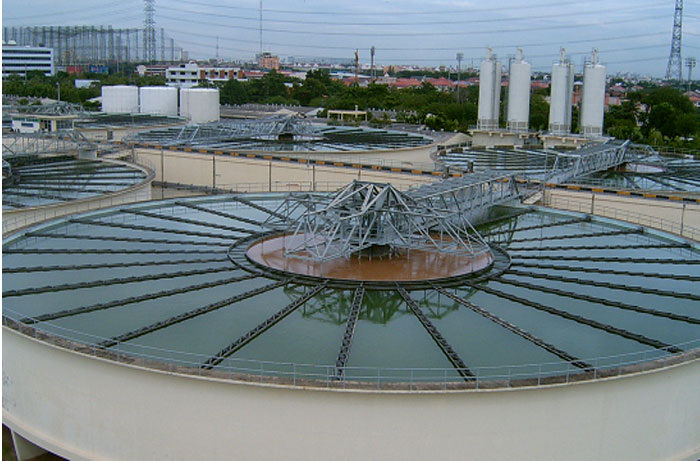 Clarification of Water: Types of Processes
Clarification of Water: Types of Processes
Clarification removes suspended solids, colloidal matter, and macromolecules that may impart unwanted turbidity or colour to the water. These are organic and mineral matter, and the living organisms of phytoplankton (algae) and zooplankton also fall under this definition.
Clarification is a process that involves multiple stages for removing the suspended solids. First, coagulants are added. They reduce the consumption of ions and accumulate in larger particles called swarms. The herd is then settled by gravity into the settling tank or removed as the water passes through the gravity filter. Purification effectively removes the particles larger than 25 microns. Suspended solids that remain to be separated in filtered water will need to be treated again.
Wastewater
Clarifier Plant in Mumbai is used to manage water and further clarification. The clarification is applied each time the water must acquire the chemical-physical and organoleptic characteristics in safety. This article will distinguish two categories of processes.
Physical treatments
They are applied when it comes to a simple mechanical solid-liquid separation, without the introduction of reagents:
- Screening (if possible, automatic cleaning screen);
- Sieving (mesh gap of the order of 1 mm);
- Micro-sieving (mesh gap of the order of ten micrometres);
- Grit removal;
- Settling;
- Deoiling.
In the field of natural water treatment, these processes generally only constitute a prerequisite for a physicochemical or biological treatment
Clarifier Plant Manufacturer in Pune, except in certain exceptional cases: for example, micro-sieving of water containing only large plankton; but in this case, an energetic post-disinfection is essential to avoid subsequent developments from forms of reproduction or resistance (eggs, cysts, spores, etc.) which have passed through the treatment.
Physico-chemical treatments
They are needed to clarify water containing colloids, i.e. almost all surface water, some spring water from karstic soils, some deep water containing humic acids in pseudo colloidal solution, etc. The clarification will be subdivided into the following stages:
- Coagulation: destabilization of colloidal particles and formation of microcell consisting of metal hydroxide and colloids;
- Flocculation: bringing together of the micromycetes in a form that can be separated from the aqueous phase;
- Solid-phase separation: Sedimentation is the physical removal of a suspension by sedimentation that occurs after particles have solidified and accumulated. In this phase, sedimentation occurs, and it is here that the Clarifier Plant in Pune is used. The water passes through the modular structures of the packs in the clarification process: the sludge settles, and the clarified water goes on to further treatment phases. The filtration phase that follows serves to retain the solids not yet sedimented. At this point, the distilled water can be chlorinated, stored and sent to the distribution system through pumps.
The
Clarifier Plant Manufacturer in Mumbai offers clarifiers providing the most economical solution to sedimentation and clarification requirements. The simple design guarantees coagulation, agglutination, high solids recycling and activated sludge removal in one tank. These clarifiers are ideal for removing turbidity and softening. The design eliminates the need for additional tanks and tubes, saves space, and reduces maintenance and operational costs.
 Clarification of Water: Types of Processes
Clarification removes suspended solids, colloidal matter, and macromolecules that may impart unwanted turbidity or colour to the water. These are organic and mineral matter, and the living organisms of phytoplankton (algae) and zooplankton also fall under this definition.
Clarification is a process that involves multiple stages for removing the suspended solids. First, coagulants are added. They reduce the consumption of ions and accumulate in larger particles called swarms. The herd is then settled by gravity into the settling tank or removed as the water passes through the gravity filter. Purification effectively removes the particles larger than 25 microns. Suspended solids that remain to be separated in filtered water will need to be treated again.
Wastewater Clarifier Plant in Mumbai is used to manage water and further clarification. The clarification is applied each time the water must acquire the chemical-physical and organoleptic characteristics in safety. This article will distinguish two categories of processes.
Physical treatments
They are applied when it comes to a simple mechanical solid-liquid separation, without the introduction of reagents:
Clarification of Water: Types of Processes
Clarification removes suspended solids, colloidal matter, and macromolecules that may impart unwanted turbidity or colour to the water. These are organic and mineral matter, and the living organisms of phytoplankton (algae) and zooplankton also fall under this definition.
Clarification is a process that involves multiple stages for removing the suspended solids. First, coagulants are added. They reduce the consumption of ions and accumulate in larger particles called swarms. The herd is then settled by gravity into the settling tank or removed as the water passes through the gravity filter. Purification effectively removes the particles larger than 25 microns. Suspended solids that remain to be separated in filtered water will need to be treated again.
Wastewater Clarifier Plant in Mumbai is used to manage water and further clarification. The clarification is applied each time the water must acquire the chemical-physical and organoleptic characteristics in safety. This article will distinguish two categories of processes.
Physical treatments
They are applied when it comes to a simple mechanical solid-liquid separation, without the introduction of reagents:




